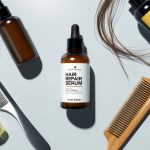How to Build an Effective Skincare Routine for Every Skin Type
Building Your Daytime Skincare Routine
A strong daytime skincare routine helps protect the skin against environmental damage and UV rays while supporting optimal hydration and skin barrier function. Effective routines include cleansing, targeted treatments, and reliable sun protection to maintain healthy, radiant skin.
Choosing a Morning Cleanser
Selecting the right morning cleanser is essential for removing overnight oil, sweat, and skincare product residue. A gentle, sulfate-free cleanser can cleanse the skin without stripping away natural oils, making it suitable for both dry and sensitive skin types.
Gel cleansers work well for oily or combination skin, as they help remove excess sebum. Those with normal skin may benefit from cream cleansers, which balance cleanliness and hydration.
Ingredients like ceramides and hyaluronic acid in cleansers can provide added moisture and reinforce the skin barrier. It’s important to use lukewarm water to avoid irritation or overdrying.
A well-chosen cleanser preps the skin for the absorption of serums and moisturizers applied in later steps. For more tailored suggestions, check out tips from CeraVe’s skincare routines.
Applying Day Cream and Sunscreen
Hydration and sun protection are two critical pillars of a proper daytime routine. Day creams often contain moisturizers such as glycerin, squalane, and peptides, which lock in moisture and help repair the skin barrier.
Choose non-comedogenic options for acne-prone skin, and richer formulas for those with dry or mature skin. Daily use of sunscreen protects against UVA and UVB rays, preventing sun damage, premature aging, and skin cancer.
Dermatologists recommend broad-spectrum sunscreen with an SPF of at least 30, applied every morning—even on cloudy days. Many modern day creams now include added SPF for convenience, but standalone sunscreen tends to offer more reliable protection.
Make sure to apply sunscreen as the last step in the morning routine and reapply every two hours if exposed to sunlight or after sweating. Visit this guide on building a skincare routine with sunscreen for more information.
Daily Use of Serums and Boosters
Serums and boosters provide targeted benefits by delivering concentrated active ingredients directly to the skin. Common morning serum ingredients include vitamin C for antioxidant protection and brightening, niacinamide for soothing and balancing, and hyaluronic acid for hydration.
These skincare products should be applied after cleansing and before moisturizing for maximum efficacy. Lightweight, fast-absorbing serums work well for all skin types, but individuals should select formulas based on their unique needs, such as anti-aging, hydration, or calming.
Boosters such as peptides or antioxidants can be used to enhance these effects but should be layered carefully to avoid irritation. Use only a pea-sized amount and allow each product to absorb before applying the next one.
This ensures no pilling and helps the active ingredients perform effectively throughout the day. For more step-by-step guidance, see how to build a skin care routine incorporating serums and boosters.
Nighttime Skincare Routine Best Practices
A nighttime skincare routine helps repair and rejuvenate the skin after exposure to daily stressors like pollution, makeup, and sun. The right products and techniques support natural skin restoration and hydration while you sleep.
Importance of Makeup Remover
Properly removing makeup at night is essential for keeping pores clear and preventing breakouts. Using a dedicated makeup remover or cleansing balm ensures that even waterproof and long-wearing products are completely dissolved.
This step reduces the risk of irritation and allows active ingredients in the following steps to penetrate effectively. For thorough cleansing, double cleansing is often recommended.
Start with an oil-based cleanser to break down makeup and sunscreen, then follow with a gentle water-based cleanser to wash away residual oils and impurities. Consistent use of makeup remover supports a clean foundation for any overnight serum or moisturizer, minimizing the risk of clogged pores and dullness.
Night Creams and Overnight Hydration
Night creams are designed to deliver deep hydration and lock in moisture during sleep, addressing issues such as dryness, tightness, and flakiness. These creams often feature ingredients like hyaluronic acid, ceramides, and peptides, which help to restore the skin barrier and replenish lost moisture.
A richer texture sets night creams apart from lightweight daytime moisturizers. Applying a night cream after cleansing maximizes absorption.
Hydration overnight can also help soothe skin, reduce redness, and improve overall softness by morning. For more details on selecting products, see dermatologist insights.
Nighttime Serums and Treatments
Serums and targeted treatments play a key role in any effective nighttime skincare routine. They often contain concentrated active ingredients such as retinol, niacinamide, or vitamin C, which work overnight to improve skin tone, texture, and firmness.
The thinner consistency of serums allows them to deliver active compounds more deeply into the skin. Because the skin’s ability to repair itself is enhanced at night, this is the ideal window for applying serums that target specific concerns like hyperpigmentation, fine lines, or acne.
For best results, serums should be applied after cleansing and before moisturizer. Those with sensitive skin should gradually introduce new nighttime treatments, monitoring the skin’s response and adjusting as needed.
Following a consistent routine with the correct order of application enhances the overall benefits of overnight skincare, as advised by dermatologists and skincare experts.



